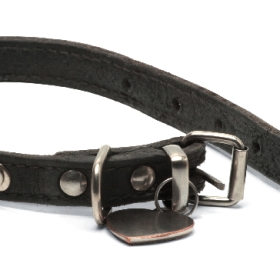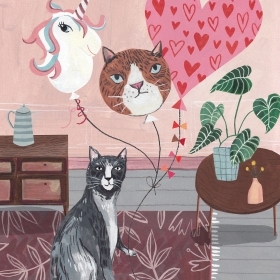A lesser-known phenomenon of the college experience is the “Dog Drop”—when childhood pets start to drop dead. But comfort can be found in unexpected places.

You’ve probably heard of the “Turkey Drop”—the time in late fall when college first-years dump their high school sweethearts. But a lesser-known phenomenon of the college experience is the “Dog Drop”—when childhood pets start to drop dead. It makes sense: The pet you got when you were a kid is now 10, 12, 14 years old. It’s just a matter of time.
It was a chilly November night my first year at Wellesley when my parents made the call. Gus, the terrier I begged for at age 9, had been suffering from a digestive disease. His intestines weren’t contracting anymore, and even an expensive surgery hadn’t fixed the problem. When my parents called me, I was walking back to Claflin from an evening study session at Clapp. They told me Gus had stopped eating, and I sat down heavily on the frigid curb outside the Davis Museum. Gus loved food more than anything, so I knew it was the end. They made the appointment for early the next week so I could be there.
I spent the following morning finding each of my professors and explaining to them that I needed to miss class next Tuesday to go home to put down my dog. Most were kind about it, some were awkward or uncomfortable. It was exhausting repeating the story, and I got closer to tears with each conversation.
By the time I met with my Russian 101 professor, I began to lose it. Trying not to sob, I studied the Cyrillic spines of Professor Hodge’s books and told him why I’d miss class. Swallowing hard, expecting a standard response, I suddenly realized Professor Hodge was telling me about the dog he had after college, the dog that had sat at his feet as he researched his Ph.D., and how devastated he was when she died. I looked away from the bookshelf and saw my professor was crying, and then I was crying, and there we both were, on the fourth floor of Founders, weeping about our dead and soon-to-be-dead dogs.
On Tuesday, Nov. 7, 2006, my parents and I took Gus to the vet to be euthanized. Even though he was so weak, Gus still climbed into the car with enthusiasm. He’d always had a strong sense of adventure: He loved going for rides, hanging his head out the window; fishing with my dad, barking at seagulls; and breaking out through the back door to have a walkabout, always to return home when he smelled dinner cooking. He greeted everyone at the vet’s office joyfully, and I teared up thinking how much Gus had always loved other people and dogs—a little terrier mayor. And as we said goodbye, I petted his blonde scruff and thought of feeding him his favorite snacks. Lying on the floor while he licked peanut butter off my fingers. Lounging in the sun in the backyard as he chomped a baby carrot. It was those little things I would miss the most.
Gus’s death was terrible, but I was grateful to my professors for letting me miss class. In the weeks that followed, Professor Hodge was particularly kind. He checked in on how I was doing, and even began hiring me to dog-sit Lulu, his blonde rescue mutt. I’m sure he actually did need the dog-sitting help, but I sensed he was also giving me a much-needed puppy fix. I’m not saying I became a Russian major because of the kindness Professor Hodge showed me after Gus died, but I’m not saying I didn’t, either. Guess who I asked to be my faculty advisor?
Years passed, I loved other dogs, and those dogs died, too, and each time, I always thought of Gus and of Professor Hodge’s compassion. Loving and losing dogs is a vicious cycle.
When I met Professor Hodge for lunch in fall 2021, 15 years after Gus’s death, I told him about my forthcoming book, Good Grief: On Loving Pets, Here and Hereafter, which is about the many and varied ways we mourn and remember our non-human family members after they die. Several of the stories in the book were inspired by the empathy I felt from members of the Wellesley community. Since I’d last seen Professor Hodge, Lulu—the pup I used to dog-sit—had also died. He pulled out his phone to show me photos of Hazel, his family’s latest rescue, shiny and brown. I took out my phone to scroll through pictures of Seymour, my gray mutt with bat ears. One day these dogs will be gone, too, but I’ll always be grateful for my fellow humans who get what it’s like to love and lose pets.
“Kindness. The only possible method when dealing with a living creature,” writes Mikhail Bulgakov in The Heart of a Dog. Kindness is the thing our pets show us every day; pets love us unconditionally, even if we step on their tails or forget to feed them dinner. And when an animal you love dies, the thing you need most to get through that grief is another person who understands and gives you that same love and kindness.
E.B. Bartels ’10 is the author of Good Grief: On Loving Pets, Here and Hereafter, which will be published by Mariner Books on Aug. 2. She lives outside Boston with her husband, Richie, and their many, many pets.


